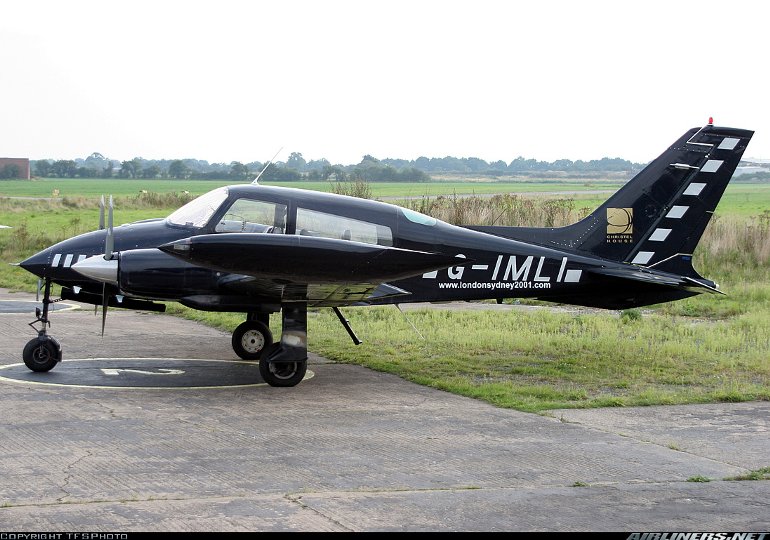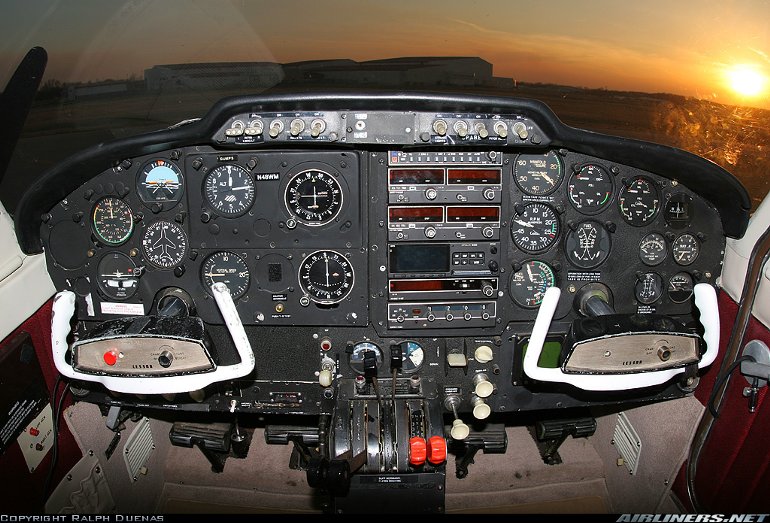Aircraft Technical Data
Cessna 310/320


| Details | |
| Country of Origin | United States of America |
| Type | Four to six seat light piston twins |
| History | The sleek Cessna 310 was the first twin engine design from Cessna to enter production after WW2. The 310 first flew on January 3 1953. The modern rakish lines of the new twin were backed up by innovative features such as engine exhaust thrust augmentor tubes and the storage of all fuel in tip tanks. Deliveries commenced in late 1954. The first significant upgrade to the 310 line came with the 310C of 1959, which introduced more powerful 195kW (260hp) IO-470-D engines. The 310D of 1960 featured swept back vertical tail surfaces. An extra cabin window was added with the 310F. A development of the 310F was the turbocharged 320 Skyknight, with TSIO-470-B engines and a fourth cabin side-window. The Skyknight was in production between 1961 and 1969 (the 320D, E and F were named Executive Skyknight), when it was replaced by the similar Turbo 310. The 310G introduced the 'stabila-tip' tip tanks, while the 310K replaced the rear two windows on each side with a single unit. Subsequent significant developments include the 310Q and turbocharged T310Q with redesigned rear cabin with a skylight window, and the final 310R and T310R, identifiable for their lengthened noses. Production ended in 1980. USAF military versions were the L-27A (310A) and L-27B (310M) Blue Canoe, later redesignated U-3A and U-3B. |
| Powerplants | 310B - Two 180kW (240hp) Continental O-470-M flat six piston engines driving two blade constant speed McCauley propellers. T310P - Two 213kW (285hp) turbocharged and fuel injected TSIO-520-Bs. 310R - Two 213kW (285hp) Continental IO-520-MB fuel injected piston engines. |
| Performance | 310B - Max speed 383km/h (207kt), cruising speed 291km/h (157kt). Initial rate of climb 1800ft/min. Service ceiling 19,800ft. Range with no reserves 1617km (873nm). T310T - Max speed 442km/h (237kt), max cruising speed 418km/h (226kt) at 20,000ft, long range cruising speed 288km/h (156kt) at 10,000ft. Initial rate of climb 1862ft/min. Service ceiling 28,600ft. Range at max cruise with no reserves and standard fuel 1226km (662nm) at 10,000ft, 3146km (1699nm) at 20,000ft. 310R - Max speed 383km/h (207kt), max cruising speed 360km/h (195kt), long range cruising speed 267km/h (144kt). Initial rate of climb 1662ft/min. Service ceiling 19,750ft. Max range with reserves 1170km (632nm), with reserves and optional fuel 2840km (1535nm). |
| Weights | 310B - Empty equipped 1436kg (3166lb), max takeoff 2190kg (4830lb). T310P - Empty 1493kg (3292lb), max takeoff 2268kg (5400lb). 310R - Empty equipped 1480kg (3260lb), max takeoff 2495kg (5500lb). |
| Dimensions | 310B - Wing span 10.88m (35ft 9in), length 8.23m (27ft 0in), height 3.20m (10ft 6in). Wing area 16.3m2 (175sq ft). T310P - Wing span 11.25m (36ft 11in), length 8.92m (29ft 3in), height 3.02m (9ft 11in). Wing area 16.6m2 (179sq ft). 310R - Wing span 11.25m (36ft 11in), length 9.74m (32ft 0in), height 3.25m (10ft 8in). Wing area 16.6m2 (179sq ft). |
| Capacity | 310 - Five to six seats. 320 - Six to seven seats |
| Production | Total 310 and 320 production (including prototypes) was 6321 aircraft, of which 5741 were 310s and 580 were 320s. From this production 196 were built for the US military as L-27, later U-3. |
| Related Links | Cessna 310/320 |
The backbone of this section is from the The International Directory of Civil Aircraft by Gerard Frawley and used with permission. To get your own copy of the book click here. |
|








